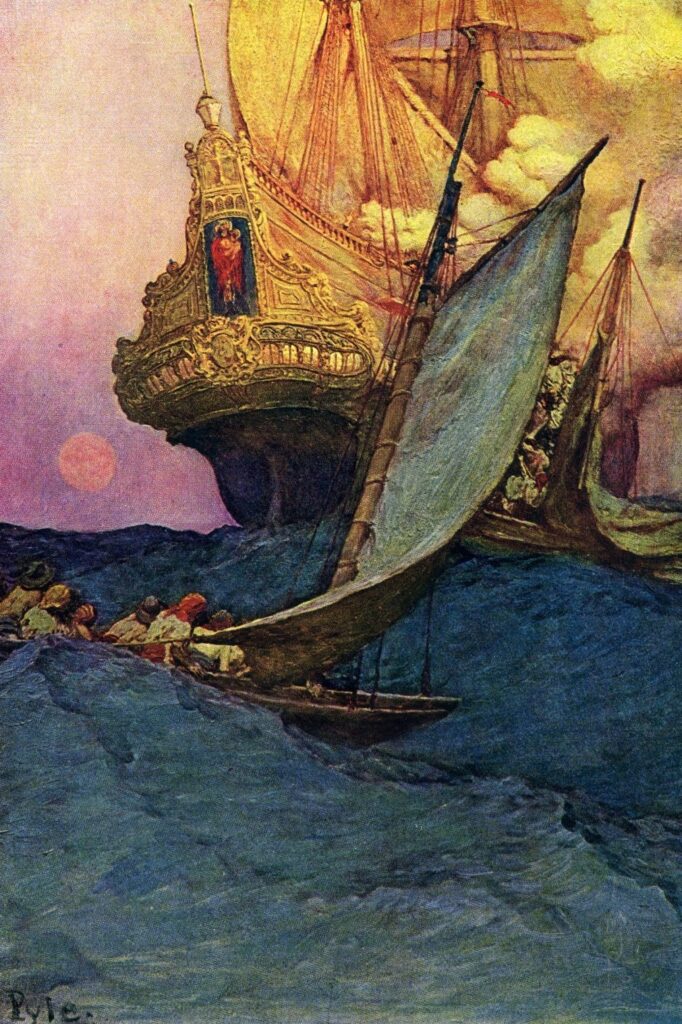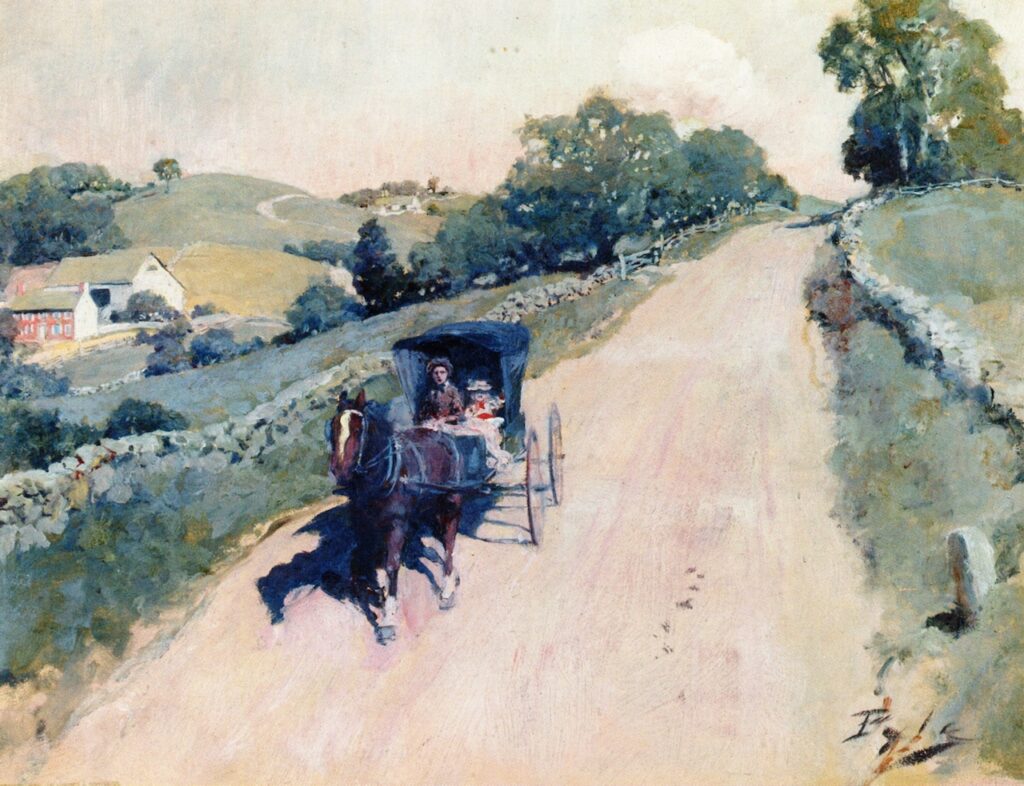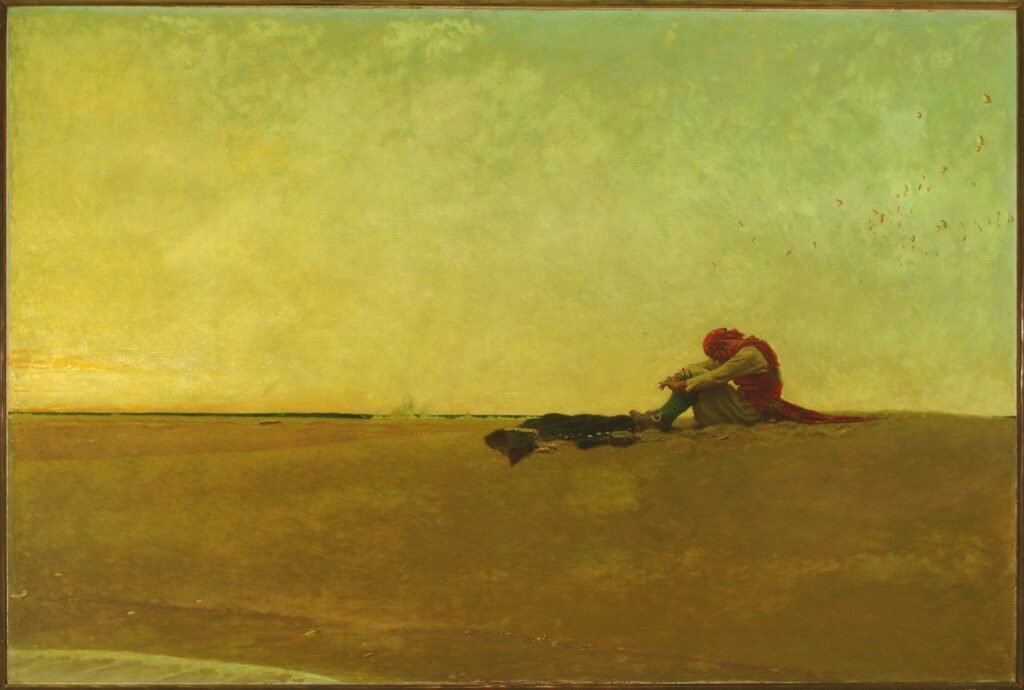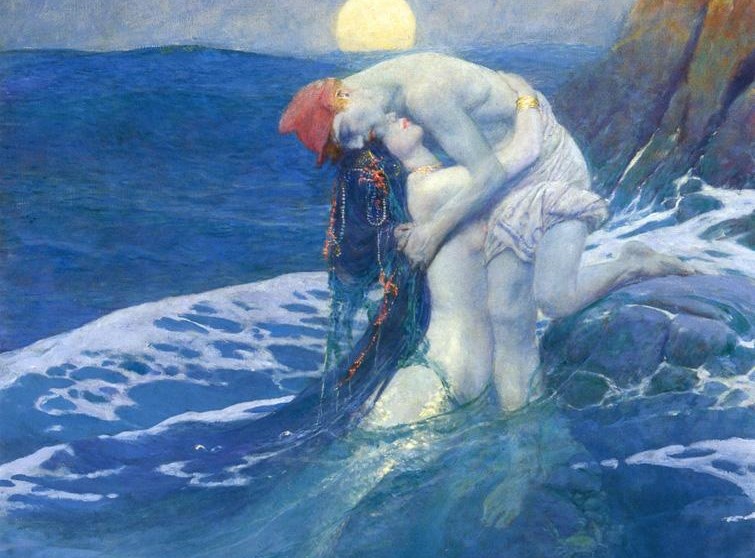American author and illustrator Howard Pyle was well known for his work in the late 19th and early 20th centuries. He was born in Wilmington, Delaware, on March 5, 1853, and passed away in Florence, Italy, on November 9, 1911. Pyle is frequently called the “father of American illustration” for his substantial contributions to the field. He was an expert in painting historical and adventurous situations; his speciality was scenes from the Renaissance and Middle Ages. Pyle frequently used powerful storytelling devices, dramatic compositions, and aggressive lines in his pictures.
The illustrated version of “The Merry Adventures of Robin Hood,” Pyle first published in 1883, is among his most well-known creations. His lively and captivating drawings contributed to the myth of Robin Hood becoming prominent in the new reading age. Pyle was not just a gifted illustrator but also a gifted writer. Among the many books he wrote and drew are “Otto of the Silver Hand” (1888) and “The Story of King Arthur and His Knights” (1903). Pyle’s work inspires artists and illustrators worldwide, and his effect on American illustration is still evident today. His contributions to American literature and cultural history continue to be substantial.
Art of Howard Pyle
A common belief is that Pyle is the “father of American illustration.” By helping to move the emphasis away from European forms, he was instrumental in establishing the tradition of American illustration as a respectable art form. Pyle was a gifted teacher and a talented illustrator. He established the Brandywine School, where he served as a mentor to numerous budding artists, including N.C., who went on to become well-known individuals. Maxfield Parrish and Wyeth. For many years, the path of American illustration was shaped by his educational legacy.

Pyle illustrated many great literary works, especially children’s books and adventure stories. The popularity and cultural influence of these works were greatly enhanced by his lively and intricate pictures, which brought these stories to life for many readers. Historical themes, particularly those about the Middle Ages and pirates, greatly captivated Pyle. His colourful and inventive depictions of historical figures and events contributed to popularising these topics and inspired a resurgence of historical interest in the general people.
Bold lines, vibrant colours, and meticulous attention to detail define Pyle’s unique style, which still impacts illustrators and painters today. Artists worldwide continue to study and respect his compositional skills, use of light and shadow, and storytelling through pictures.
Masculinity and the Fate of American Art
That Pyle would have preferred to memorialize Rodin, the living French sculptor, rather than Whistler, the American painter whose etchings were widely celebrated as significant artistic accomplishments, helps illuminate the meaning of illustration for Pyle and his contemporaries. Ultimately, Pyle distanced himself from the Whistler monument not because he thought Whistler was a poor artist (after all, he imagined endorsing a monument by Whistler) but because he believed that Whistler’s work provided a poor example of American art. To Pyle, the nation’s cultural maturity ought to be represented by an art distinctly American in form and spirit, neither of which Whistler’s work accomplished. Pyle, the illustrator who never desired to visit Europe until the end of his life, was not prepared to see the expatriate painter presented on the world stage as a paragon of American art, writes Eric J. Segal in his essay, ‘The Gender of Illustration: Howard Pyle, Masculinity, and the Fate of American Art’.

Eric J. Segal claims that Pyle’s dedication to illustration went above and beyond its potential to realise the aspirations of American cultural success. It was further infused with the modern era’s concerns for preserving and promoting middle-class masculinity. Pyle’s contemporaries, who believed that modern social life was weakening the country, discussed and expressed concern about the state of American manhood. However, Pyle, as a professional illustrator, understood these issues differently, thinking that the best illustrations in his industry could capture a macho American spirit that was essential to the culture of the country.
Pyle, who famously declared, “I’m not a painter,” often emphasised the difference between illustration and painting. Since I’m an illustrator, I can illuminate, which is fantastic work. Painting was considered a more prestigious art form, and illustration was frequently considered a stepping stone to it in the late nineteenth century.
In an essay on Pyle, Mortimer Marke states, ‘Assuming Christopher Columbus discovered America geographically, the late Howard Pyle discovered America artistically.’
‘To form any coherent and comprehensive critical estimate of his versatility, it is, perhaps, most suitable to trace his work through its several stages, keeping in mind that throughout his entire career, he was ever ready to turn to pirates and treasure ships, with a sort of naive enthusiasm that suggests, somewhat, our perennial joy in ” Treasure Island,” and which indicates a wholesome state of mind, with little sophistication. This lack of sophistication is one of the most generally characteristic elements pervading the more significant part of his work, for his pirates are pirates, and his ogres and genii leave no doubt about their personalities. His presentations are full of frank enthusiasm, which is almost theatrical, except that with all the fantasy of his imagination, there is a distinct element of reality and matter-of-fact delineation, which may be taken as another general characteristic element, writes Mortimer Marke in his essay.
At the same time as the criticism, some feminist theorists argue that Pyle’s artistic practice would support feminism, while He was born in 1853, a time when men subjugated women. ‘They were not afforded the same educational opportunities as men, they could not hold property or vote, and their job prospects were minimal as they were expected to marry and have children. Fortunately, Pyle was exposed to a combination of factors in his youth that were unique for the period—an intellectual mother with a strong passion for the arts and an early exposure to female students who were trained in an academic setting alongside himself and other males—and that enabled his development of respect and appreciation for women’s proficiencies. Pyle’s enlightened views on women would lead him on an unconventional journey through the art world, culminating in his implementation of a philosophy practically unheard of in the late nineteenth century. At a time when the majority of students at university were male and a patriarchal social structure shaped the art world, Pyle broke down barriers for women by integrating female students into his illustration classes and actively promoting and facilitating their success within the arts, writes Jennifer Satterfield Farr.
Characters of Howard Pyle
“The Merry Adventures of Robin Hood” by Howard Pyle is a famous account of the exploits of the fabled English bandit. Since its initial publication in 1883, Pyle’s rendition of the Robin Hood mythology has grown among the most well-known and lasting. Pyle portrays Robin Hood as a brave and honourable bandit who robs the wealthy to give to the underprivileged. Numerous colourful figures from English legends, such as Little John, Friar Tuck, Will Scarlet, and Maid Marian, are featured throughout the book and accompany Robin on his adventures against the despotic Sheriff of Nottingham and other dishonest officials.
With his rich language and detailed descriptions of the Sherwood Forest and the exploits of Robin and his Merry Men, Pyle’s writing style perfectly evokes the atmosphere of mediaeval England. The book’s status in popular culture has been cemented by the multiple film, television, and other media adaptations that it has received.
Howard Pyle also studied the myths surrounding King Arthur and the Knights of the Round Table. Published in 1903, his work “The Story of King Arthur and His Knights” offers yet another traditional reading of the Arthurian legend. Pyle’s rendition recounts the well-known tales of King Arthur’s birth, the ascent to power through the retrieval of the sword from the stone, the establishment of Camelot, the adventures of his knights, the tragic romance between Lancelot and Guinevere, and the fall of Arthur’s kingdom as a result of Mordred’s treachery.
1921 saw the publication of a compilation of pirate stories in Howard Pyle’s “Book of Pirates: Fiction, Fact & Fancy Concerning the Buccaneers & Marooners of the Spanish Main”. In this anthology, Pyle— renowned for his rich storytelling and intricate illustrations—brought the exciting world of pirates to life. To produce a fascinating representation of the daring exploits of pirates on the Spanish Main, the “Book of Pirates” incorporates both real tales and fictional yarns. While exploring the terrible realities of piracy, such as the bloodshed, betrayal, and anarchy that marked the era, Pyle’s writings frequently romanticise the pirate way of life.

One of Howard Pyle’s short stories from his 1895 collection “Twilight Land” is titled “The Mermaid”. In this story, Pyle delves into the ethereal realm of mermaids and how people engage with these legendary beings. In “The Mermaid,” a young fisherman named Jack meets a stunning mermaid while out at sea. Even though his other fishermen caution him about the risks associated with mermaids, Jack is entranced by the mermaid’s beauty and falls in love with her.
Howard Pyle is one of the most significant figures in American narrative and illustration. His literary achievements have had a lasting effect on popular culture, especially in historical fiction, folklore, and adventure. Legendary characters like Robin Hood, King Arthur, and the Pirates of the Spanish Main were brought to life by Pyle’s distinctive fusion of detailed pictures and passionate storytelling—his tales of bravery, honour, and adventure delighted and inspired generations of readers.





